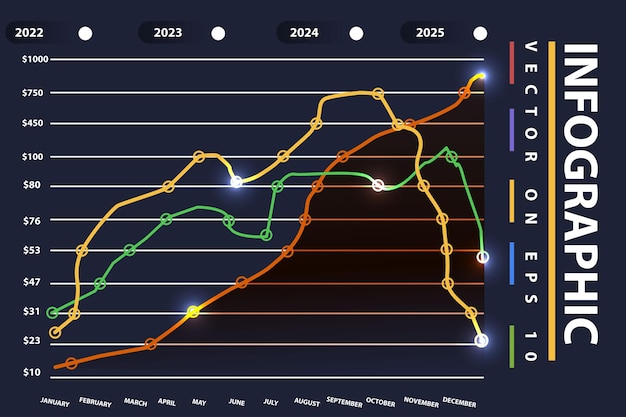Federal Reserve Interest Rate Decision: What to Expect Next Week

Anúncios
The Federal Reserve is expected to announce its next interest rate decision next week, influencing borrowing costs for consumers and businesses across the US.
Get ready, because the Federal Reserve expected to announce interest rate decision next week, a pivotal event that could reshape the financial landscape for Americans. Let’s dive into what this decision means and how it might impact you.
Anúncios
Federal Reserve Meeting: Key Expectations
Next week’s Federal Reserve meeting is highly anticipated, setting the tone for economic activity across the United States. The decision on interest rates is closely watched by investors, businesses, and consumers alike.
The Federal Reserve’s monetary policy decisions directly influence borrowing costs. Lowering rates can stimulate economic growth by making it cheaper to borrow money, while raising rates can curb inflation by increasing borrowing costs.
Anúncios

Possible Outcomes and Market Reactions
Several scenarios could unfold at the next Federal Reserve meeting, including a rate hike, a rate cut, or maintaining the current rate. Each outcome will likely trigger different market reactions.
- Rate Hike: The Fed may raise rates to combat inflation. This often leads to higher borrowing costs for consumers and businesses.
- Rate Cut: A rate cut could stimulate economic growth, making borrowing more affordable and potentially boosting stock prices.
- Hold Steady: Maintaining the current rate may indicate the Fed is taking a wait-and-see approach, assessing the impact of previous policy changes.
The implications of these decisions are broad, spanning from mortgage rates to business investments. Staying informed on these potential shifts is essential for sound financial planning.
Understanding the Federal Reserve’s Role
The Federal Reserve plays a crucial role in maintaining economic stability in the United States. Its primary objectives include maximizing employment, stabilizing prices, and moderating long-term interest rates.
The Fed utilizes various tools to achieve these goals, with interest rate adjustments being one of the most influential. These adjustments influence the broader economy, affecting everything from consumer spending to business investments.
The Dual Mandate: Employment and Inflation
The Federal Reserve operates under a dual mandate, focusing on maximizing employment while keeping inflation in check. Balancing these two objectives often requires careful consideration and strategic policy decisions.
The Fed closely monitors economic data, such as unemployment rates and inflation metrics, to inform its decisions. These data points provide insights into the health of the economy and guide policy adjustments.
- Unemployment Rate: A low unemployment rate generally indicates a strong labor market.
- Inflation Rate: Monitoring inflation, often measured by the Consumer Price Index (CPI), helps the Fed maintain price stability.
- GDP Growth: The Gross Domestic Product (GDP) growth rate reflects the overall health and expansion of the economy.
By understanding these economic indicators, individuals and busineses can better anticipate potential shifts in monetary policy and prepare accordingly.
Impact on Consumers: Borrowing and Savings
The Federal Reserve’s interest rate decisions have a direct impact on consumers, influencing borrowing costs for mortgages, auto loans, and credit cards. These decisions also affect savings rates in banks.
When the Fed raises interest rates, it generally becomes more expensive to borrow money. Conversely, when rates are lowered, borrowing costs decrease, potentially stimulating consumer spending.
Mortgage Rates and Home Buying
Mortgage rates are closely tied to the Federal Reserve’s policy decisions. Changes in the federal funds rate often translate into fluctuations in mortgage rates, affecting both homebuyers and homeowners.
Higher mortgage rates can make it more expensive to buy a home, reducing affordability for potential buyers. Lower rates can stimulate the housing market, encouraging more people to purchase homes.

- Refinancing: Lower interest rates can provide opportunities for homeowners to refinance their mortgages, potentially reducing their monthly payments.
- Home Equity: Rising home values can increase homeowners’ equity, providing financial flexibility for renovations or other investments.
- Market Demand: Interest rate changes affect overall demand in the housing market, influencing prices and sales volume.
Consumers should stay informed about these potential impacts to make financially sound choices. It’s important to evaluate how these economic factors might affect personal financial planning.
Business Investments and Economic Growth
Interest rate decisions by the Federal Reserve also influence business investments and overall economic growth. Lower rates generally encourage businesses to expand and invest, while higher rates can lead to slower growth.
Businesses often rely on borrowing to fund expansions, purchase equipment, and invest in research and development. Lower borrowing costs can make these investments more attractive and feasible.
Impact on Small Businesses
Small businesses are particularly sensitive to interest rate changes. They often rely on loans to fund operations and growth, making access to affordable credit crucial for their success.
Lower interest rates can reduce the financial strain on small businesses, allowing them to invest in new opportunities and hire more employees. Higher rates can make it more challenging for small businesses to thrive.
- Loan Availability: Interest rate changes impact the availability of loans for small businesses, affecting their ability to secure funding for growth and operations.
- Investment Decisions: Small businesses often adjust their investment strategies based on interest rate trends, considering the cost of borrowing and potential returns.
- Economic Confidence: Interest rate decisions also shape the overall economic confidence of small business owners, influencing their willingness to take risks and expand their ventures.
Keeping tabs on these factors is essential for businesses navigating changing economic conditions. Adjusting financial strategies in response to policy changes can help maintain stability and drive growth.
Global Economic Implications
The Federal Reserve’s interest rate decisions have far-reaching implications beyond the borders of the United States. These decisions can influence global financial markets, exchange rates, and international trade.
Changes in U.S. interest rates can impact capital flows, as investors seek higher returns in different countries. This can lead to fluctuations in exchange rates and affect the competitiveness of exports.
Exchange Rates and Trade
Interest rate decisions can influence the value of the U.S. dollar relative to other currencies. Higher rates can attract foreign investment, increasing demand for the dollar and potentially making U.S. exports more expensive.
Fluctuations in exchange rates can affect the competitiveness of U.S. businesses in international markets. A stronger dollar can make it more challenging for U.S. exporters to compete with foreign companies.
- Capital Flows: Interest rate differentials can drive capital flows between countries, impacting investment opportunities and currency valuations.
- Trade Balances: Currency fluctuations can influence trade balances, which reflect the difference between a country’s exports and imports.
- Global Market Stability: The Fed’s decisions can contribute to or mitigate global market instability, affecting financial conditions worldwide.
Understanding these global economic implications is vital for businesses and investors operating in international markets. Monitoring these trends can help them make informed decisions and manage risks effectively.
Expert Analysis and Predictions
Numerous economists and market analysts offer their insights and predictions regarding the Federal Reserve’s upcoming interest rate decision. These experts carefully analyze economic data and policy trends to forecast potential outcomes.
Their analysis often involves considering factors such as inflation, employment, and global economic conditions. By examining these elements, they aim to provide informed perspectives on the Fed’s likely course of action.
Differing Viewpoints Among Experts
It’s important to note that expert opinions on the Federal Reserve’s decisions can vary. Some analysts may anticipate a rate hike, while others may predict a rate cut or a hold steady approach. These diverging viewpoints reflect the complexity of economic forecasting.
Investors and businesses should consider a range of expert opinions when formulating their strategies. By examining different perspectives, they can gain a more comprehensive understanding of the potential outcomes and their implications.
- Economic Models: Experts often rely on economic models to simulate the potential impact of different policy decisions.
- Historical Data: Analyzing historical trends and past Federal Reserve actions can provide valuable insights into future policy decisions.
- Market Sentiment: Gauging market sentiment and investor expectations can also inform expert predictions about the Fed’s upcoming actions.
Staying informed about these expert analyses can help individuals and businesses prepare for the potential impacts of the Federal Reserve’s decisions.
| Key Point | Brief Description |
|---|---|
| 🔑 Rate Decision | The Federal Reserve’s imminent announcement on interest rates is a pivotal economic event. |
| 📈 Market Impact | Expect market volatility in response to the rate decision: hikes may curb inflation, while cuts may spur growth. |
| 🏠 Consumer Effects | Consumers will see changes in borrowing costs: impacts on mortgages, loans, and savings rates are expected. |
| 🌎 Global Reach | The decision will influence global markets through exchange rates and capital flows. |
Frequently Asked Questions
▼
The Federal Reserve, often called the Fed, is the central bank of the United States. It sets monetary policy to promote full employment and price stability through adjusting interest rates and managing the money supply.
▼
If the Fed raises rates, mortgage rates typically increase, making home buying more expensive. Conversely, if the Fed lowers rates, mortgage rates may decrease, making home buying more attractive.
▼
The Fed’s dual mandate refers to its two primary objectives: maximizing employment and maintaining price stability. It aims to promote conditions that support both goals simultaneously.
▼
Lower interest rates can encourage businesses to borrow and invest in growth, while higher rates can make borrowing more expensive, potentially slowing down business expansion and investments.
▼
Federal Reserve decisions can impact global financial markets, exchange rates, and international trade. They can influence capital flows and affect the competitiveness of exports worldwide.
Conclusion
In summary, prepare for a potentially transformative announcement from the Federal Reserve next week, an event that will set off a chain reaction affecting everything from borrowing costs for families to investment strategies for businesses both domestically and internationally. Keep an eye on market reactions and expert analysis to navigate these shifts successfully.